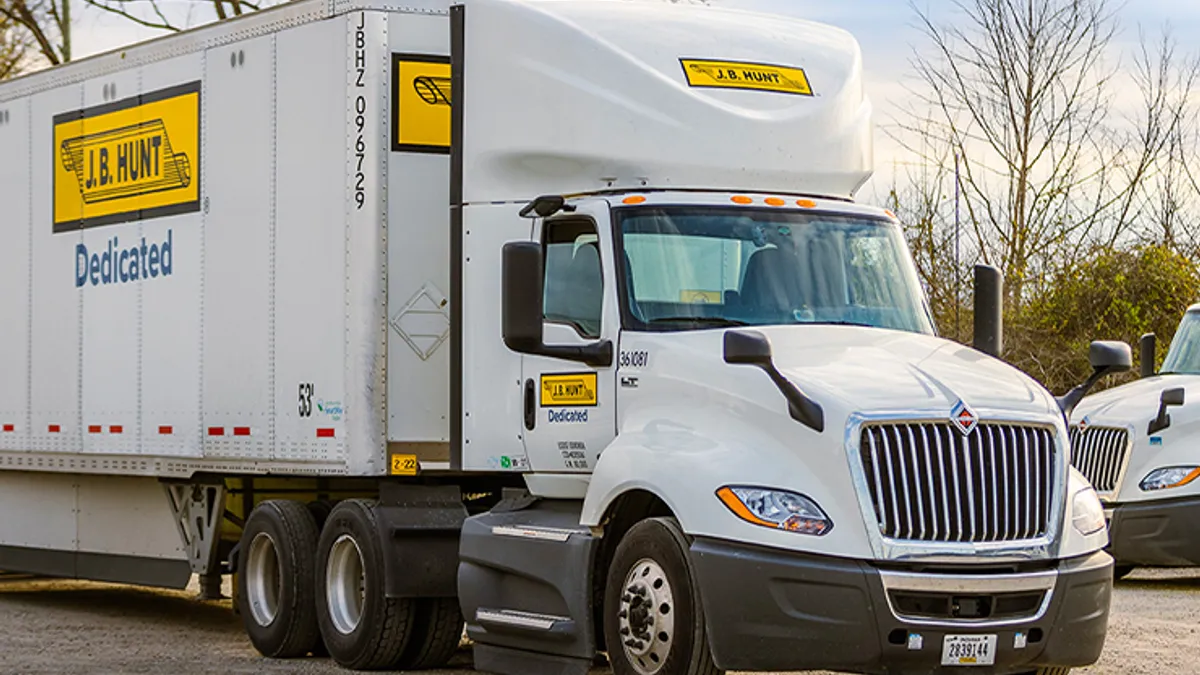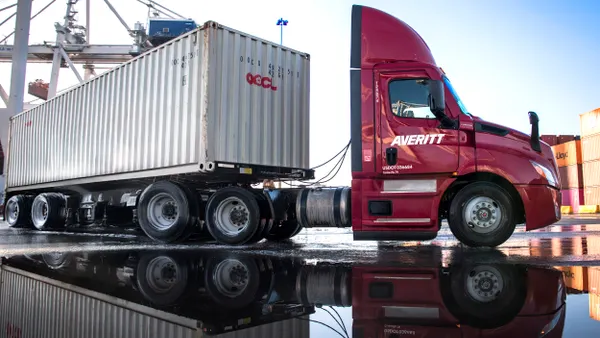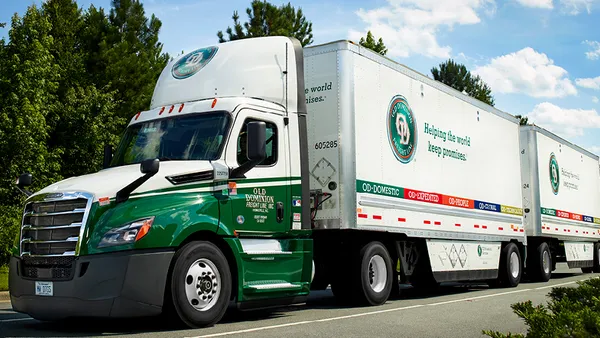The following is an opinion piece written by Ahmad El-Dardiry, chief revenue officer and general manager of Shipper Solutions at Transfix. Opinions are the author's own.
Valued at $800 billion and responsible for the daunting task of moving about 70% of our nation's freight tonnage, it is difficult to dispute how significant of a role the trucking industry plays in nation's economy.
Yet, today's shippers and carriers are bearing the brunt of drastic market swings. Trade tensions and tariff uncertainties fuel unpredictability in the freight market. It is increasingly imperative that everyone fully leverage the power of technology in order to best utilize their time and resources.
The end goal should not be to focus on surviving a potential market downturn — it should envision a broader path toward long-term growth and resilience. To do this, we need to be smarter about the use of our existing assets by building greater efficiencies directly into our supply chains — and that all starts with digitization and data-guided asset utilization.
The importance of analytics in optimizing the supply chain
With the rise in logistics technology over the last five years, shippers have unprecedented insight into, and understanding of, their processes at scale. Gone are the days of speculating if a load had been delivered. Shippers can track thousands of truck loads in real-time, down to the minute they're delivered, and can optimize their approach based on resulting data and analytics.
Despite major strides within the digital freight space, we still talk to shippers who don't have access to the tools or data needed to be able to identify the inefficiencies that exist throughout their supply chain. This creates a major blind spot, because data-driven insights are crucial for shippers to make the most impactful business decisions and determine ways they can improve the end-to-end experience for carriers.
As an industry, we've quickly transitioned from analytics and data insights being considered a competitive advantage, to being table stakes. If you're not leveraging your data to improve your entire supply chain, you're not just missing out on an opportunity, you're falling behind.
There's a prevailing misconception within the industry that by collecting data, your supply chain will be more efficient. However, not only have digital players injected innovative technology into this market, they've introduced a wave of workers, capable of understanding and properly vetting these massive datasets.
Whether you're trying to improve efficiency metrics at your facilities or trying to anticipate where the market is headed, data is only as useful as the hands that it is in — the engineers and scientists who perform vital "sanity checks" on what is collected. It's this combination of machine learning, artificial intelligence and industry expertise that unleashes the actionable insights passed down to shippers.
Aggregating regional assets for long term growth
Even more promising is the prospect of how technology can pool freight assets at scale to create an uninterrupted workflow for shippers and carriers.
Through aggregating regional data on carrier preferences and assets, algorithms can be used to intelligently match loads, providing carriers with predictable revenue streams and shippers with guaranteed capacity. Un-siloing the industry engenders greater shipper and carrier confidence across the board.
This ultimately becomes a win for both parties, as carriers will be provided with a steady flow of freight that is programmed to minimize their deadhead. At the same time, shippers will be granted access to readily available, predictable capacity on a long-term and on-demand basis, all the while knowing they are operating with fair-market prices.
Rethinking the business model
Outside of operational workflow, one of the strongest pain points facing the freight industry is the lack of trust that sometimes exists between shippers and carriers. When you talk to both parties about their needs, you quickly realize that what they really want, besides a more predictable workflow, is to have a sense of reliability and loyalty from their business partners.
In order to achieve this, the industry as a whole must make the shift toward an evolved version of the traditional business model — one where the end goal extends beyond maximizing gross margins at every given point in time and into prioritizing ways that create predictability and maintain positive synergies within the marketplace. To do this, a commitment must be made by both parties to proactively take steps toward building a more efficient, stable, and positive industry.
Tech-driven pricing plays a major role in making this happen using machine learning algorithms that can predict fair-market freight rates with better accuracy.
In such an environment, benefits such as repeat services and carrier loyalty are more likely to thrive. Instead of jumping to short-term solutions like drastic rate swings that harm both sides of the marketplace, we need to leverage the digital tools in front of us to set ourselves up for long-term growth.





















